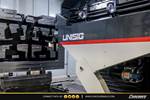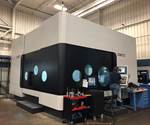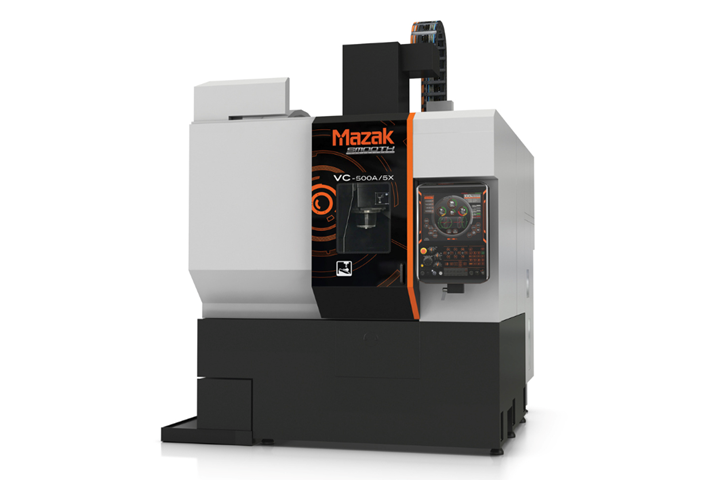Hybrid Multitasking Five-Axis Brings Subtractive, Additive Processes to Moldmakers
Mazak’s VC-500A/5X vertical machining center delivers hybrid multitasking and hot wire deposition to meet machining and additive needs.
For combined productivity, flexibility and profitability, Mazak’s VC-500A/5X AM HWD five-axis machine delivers hybrid multitasking and hot wire deposition (HWD) part processing for manufacturers, including those in the moldmaking sector. The machine combines additive processes and subtractive multitasking to reduce lead times and part costs while it increases machining accuracy and part quality.
Machining inaccuracies can occur when parts move among multiple workstations, which also creates work-in-process inventory among standalone machine tools. For heightened accuracy, precision and productivity, the VC-500A/5X AM HWD can machine a part from start to finish in a single cycle.
The machine incorporates HWD additive manufacturing technology developed through a collaboration between Mazak and Lincoln Electric, the designer, developer and manufacturer of arc welding products, robotic arc welding systems and plasma and oxyfuel cutting equipment. With HWD laser technology, the VC-500A/5X AM HWD provides a high-speed additive solution and programmable welding automation as well as full five-axis machining center capabilities.
Like conventional welding, an HWD process melts metal wire directly onto a base material and/or part of the same or a different material. This technology enables shops to generate precise sealing coatings and near-net shape part features, or to repair costly, complex components such as impellers, turbine blades, and tool and die parts.
The HWD laser cladding head feeds wire automatically to an argon gas nozzle. Depending on processing variables, the head can deliver a deposition rate of 3-5 Ibs per hour with a 98% material utilization.
Related Content
-
The Trifecta of Competitive Toolmaking
Process, technology and people form the foundations of the business philosophy in place at Eifel Mold & Engineering.
-
3D Printing Enables Better Coolant Delivery in Milling Operations
Just like 3D printing enabled conformal cooling channels in molds, additive manufacturing is now being used to optimize coolant delivery in cutting tools.
-
How to Analyze and Optimize Cutting Conditions to Reduce Cycle Time
Plastic injection mold design and manufacturing company puts NC program optimization software module to the test. The results were surprising.
















